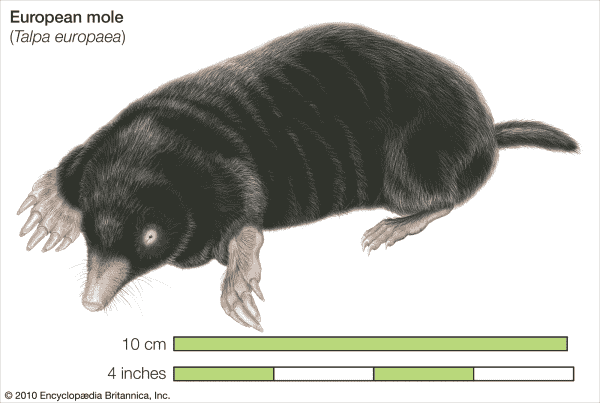The mole is a small mammal that belongs to the family Talpidae and mainly inhabits regions such as Europe, Asia and Africa. The following is a detailed introduction to moles and their living habits:

Body size: Moles are generally small, usually about 12-20 cm in length, and have a short tail.
Hair: Its hair is fine and soft, often gray-brown or black in color, sometimes showing silvery flashes in the sun.
Forelimbs: The forelimbs are strong and suitable for digging soil and building tunnels, with medium-sized claws for digging underground passages.
Habitat: Mole mainly inhabits areas such as grassland, farmland, and forest, and likes to live in moist soil and sandy soil.
Food habits: Moles mainly feed on insects, worms, crustaceans and plant roots, and are omnivores.
Behavior: Moles are nocturnal animals, resting in burrows most of the day and active at night in search of food.
Digging abilities: Mole rats are known for their powerful digging abilities, using their forelimbs and claws to dig underground passages and nests while also helping to loosen the soil.
Reproduction: Moles generally have strong reproductive capabilities. Female moles usually give birth to pups in spring, and the pups grow up after a period of nurturing.
Ecological role: Moles play an important role in the ecosystem by digging into the soil to promote soil aeration and drainage, which helps plant root growth.
Relationship with humans: Moles may cause damage to crops in farmland, but they also have certain benefits for the growth of crops due to their aeration and loosening effects on the soil.
Moles are interesting animals that live underground, and although they are not often seen, they play an important role in the ecosystem. They attract people's attention with their unique living habits and appearance. I hope the above introduction can give you a more comprehensive understanding of this interesting animal, the mole. If you have any other questions or need more information, please feel free to let me know.
animal tags: mole
We created this article in conjunction with AI technology, then made sure it was fact-checked and edited by a Animals Top editor.